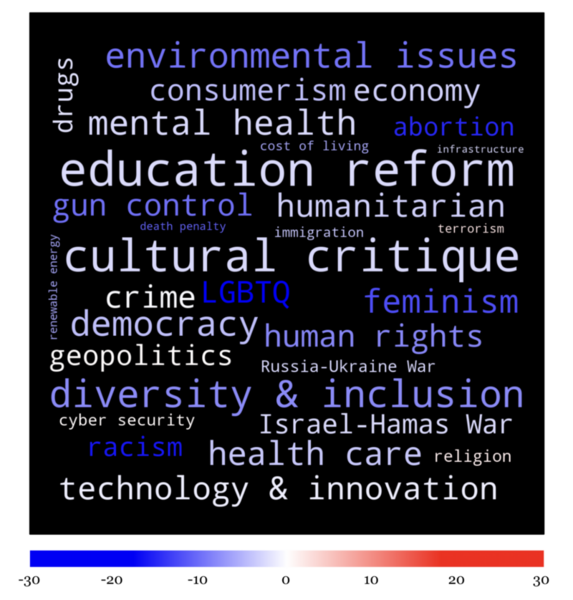Exploring Political Discourse Among High School Journalists with Web Scraping and AI Technology
(1) The Harker School
https://doi.org/10.59720/24-277
Within the U.S., the viewpoints of younger generations, especially those not yet eligible to vote, are often overlooked despite offering valuable insights into the nation’s future. In this study, we provided greater coverage of adolescent stances by investigating the political perspectives and trends of high school journalists, utilizing web scraping methods and artificial intelligence (ChatGPT-4o). We developed a Python program, "JournalScrape," to analyze over 153,000 articles from 1,971 high school publications across the nation. Each article was categorized by topic and assigned a political lean score. We hypothesized that student journalists' views would align with local county politics, with a slight progressive shift due to younger age. The results indicate that high school publications exhibit lower levels of political polarization compared to mainstream media, and journalists' views showed no significant correlation with local voting patterns, though tending to lean moderately liberal overall. The reduced polarization may be attributed to the less restrictive, more open-ended nature of high school journalism, while the progressive skew could stem from social media and cultural differences. For future research, the methodology employed in JournalScrape can be applied to gauge views on specific topics, such as climate change and gun control, and offers a novel solution to survey diverse viewpoints on a large scale. Overall, by assessing critical topics and political patterns in student journalism, this study presents a snapshot of the concerns of today’s youth. Key issues and broader trends identified provide valuable insights to guide future policymaking, especially in areas like education and culture.
This article has been tagged with: